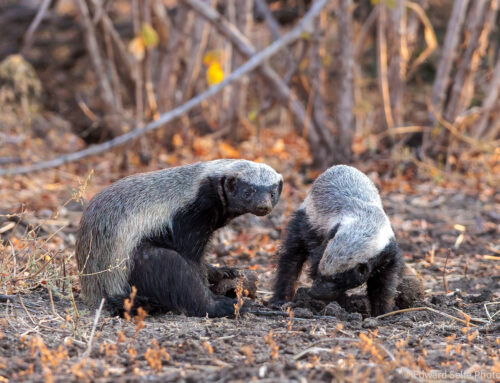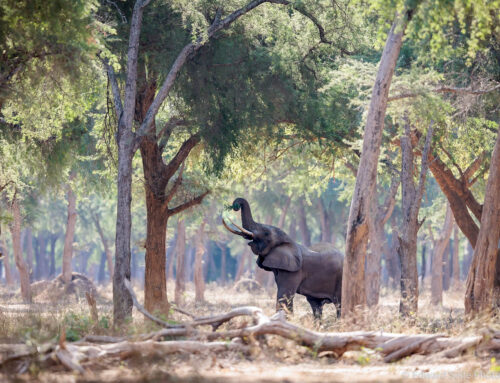It was a pleasure to welcome back Wil and Marlies Vermeesch. This is their third trip, this time travelling privately with me. They are both keen and accomplished photographers, and Wil also makes great videos of their safari. They chose to travel as a couple, rather than a group since, fewer people in the vehicle reduces the work required to remove the shakes from Wil’s final film!
They booked 12 nights with me – a wonderful length of time in Luangwa – which allowed us to take our time over sightings and to avoid that feeling of needing to move on to “something else”. The tendency to move on too soon often leads to incomplete sightings and the feeling that you have dashed around in the bush and not taken in the experience. After all, while photo safaris are about photos, they are also about safaris; and safaris are about each guests’ personal experience with the Nature, a process that should not be rushed.
We started our trip in the central Mfuwe area of the park, which has always served us well in the past. An old bull elephant had died close to the park gate, so we chose to visit that on our first afternoon and see if the lions had located the carcass. They certainly had, and were stuffing themselves on the quickly-rotting meat. While it was quite a spectacle, the photo opportunities were limited! By this time, the carcass was several days old and the lions were taking turns to feed and protect the carcass from scavengers, while the rest lay about digesting. When they occasionally rose, it was to scratch and visit the ablutions! While it is never a joy to say goodbye to an elephant, it is interesting to see how the carcass is returned to the food chain and the many mouths that benefit.
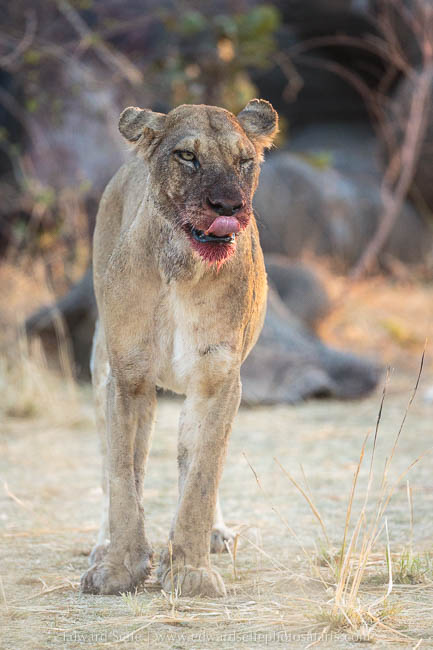

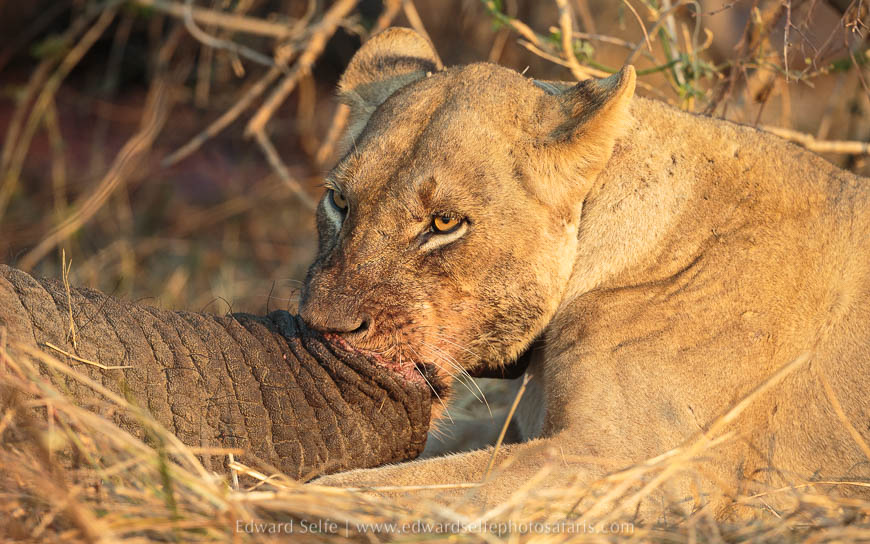
Nearby, zebras were observing the action, presumably aware that these particular lions were unlikely to pose much threat to them, and vultures circled waiting for their turn. Occasionally vultures would land on the carcass, snatch a few scraps and then hastily take flight in a flurry of feathers when the lions noticed their presence! The nearby guinea fowl were finding it all pretty terrifying; each time a lion rose from sleep, they would panic, cackling loudly, and the shadow of each wheeling vulture send them scurrying to nearby bushes.
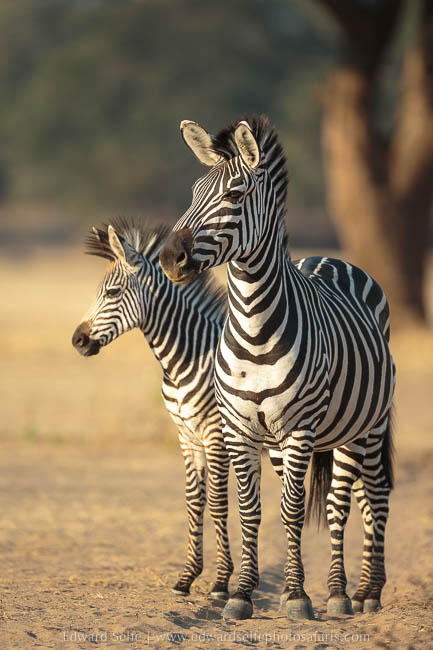
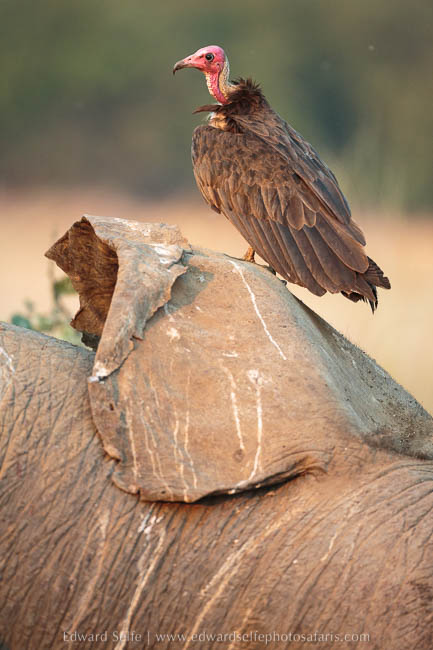
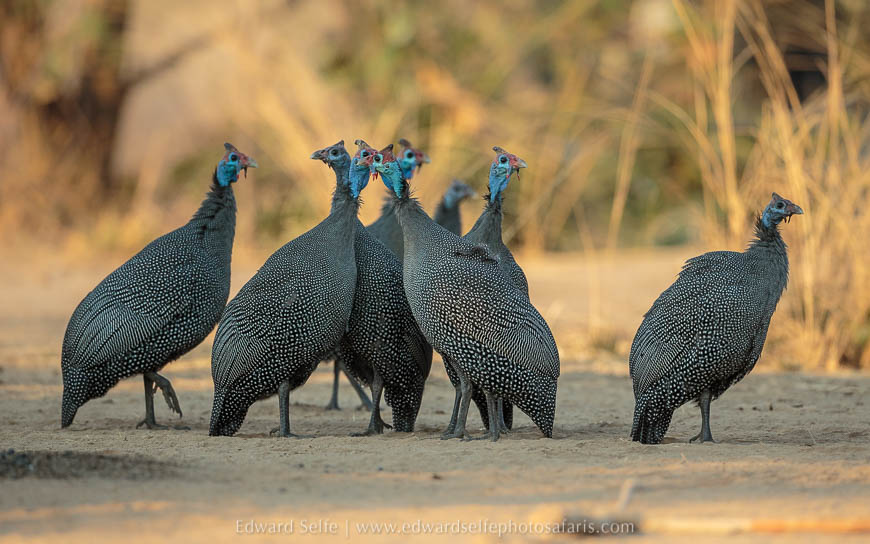
The following morning gave us our first Luangwa leopard. She had killed an impala in the night and stashed it in a tree! I was very pleased that we had started to the trip with such a great sighting! However, it wasn’t all plain sailing. She was feeding behind a thick mesh of branches! While we watched we reflected on the very demanding nature of wildlife photographers; we need the animals to do the right thing, in the right light, at the right time of day! So it was with pleasure that we put our cameras down and watched as a beautiful leopard gracefully, and powerfully, manoeuvred her kill around the awkward tree. And, as is so often the case when we relax, eventually she positioned the carcass in such a way that we could get some great shots of her feeding. Patience was key here.

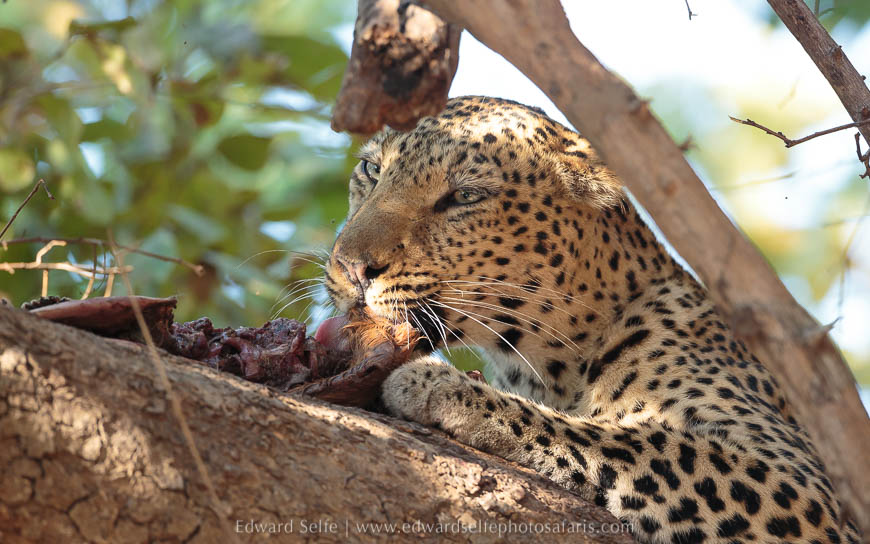
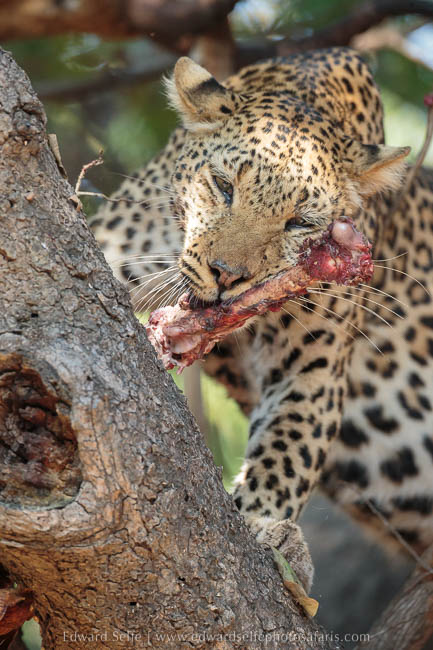
The afternoon gave us some interesting sightings, the best of which were a Verreaux’s eagle owl against beautiful greenery, and a large herd of buffalo. We ended the afternoon with a sighting of 3 of the 4 new males in the Mfuwe area who are challenging Ginger and Garlic the famous incumbent duo!
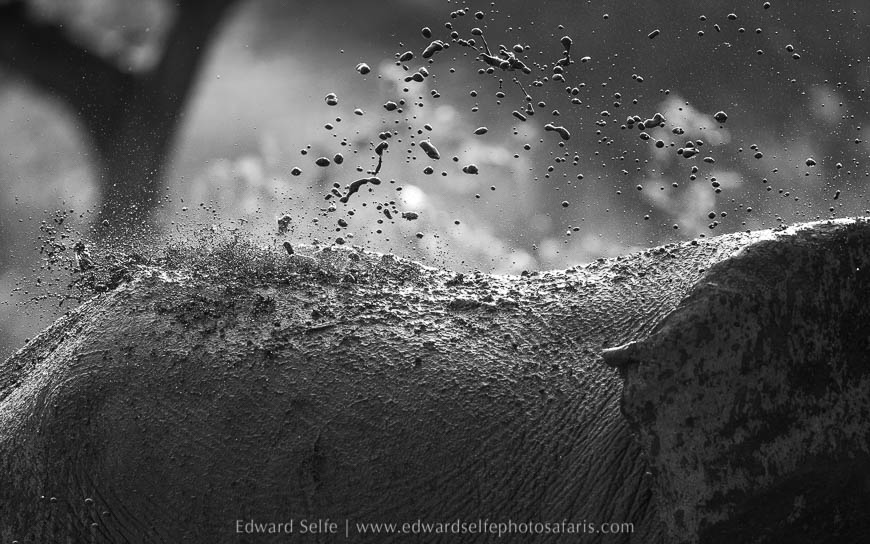
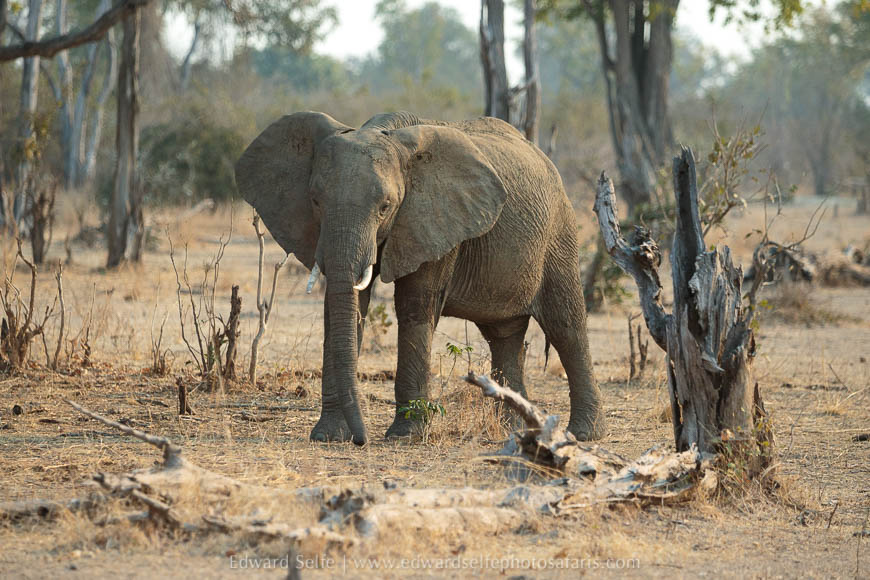
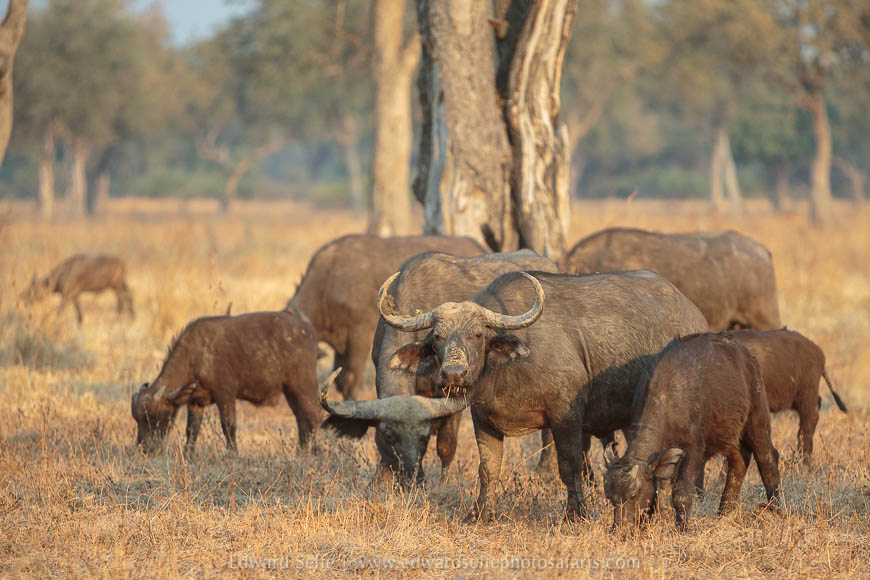
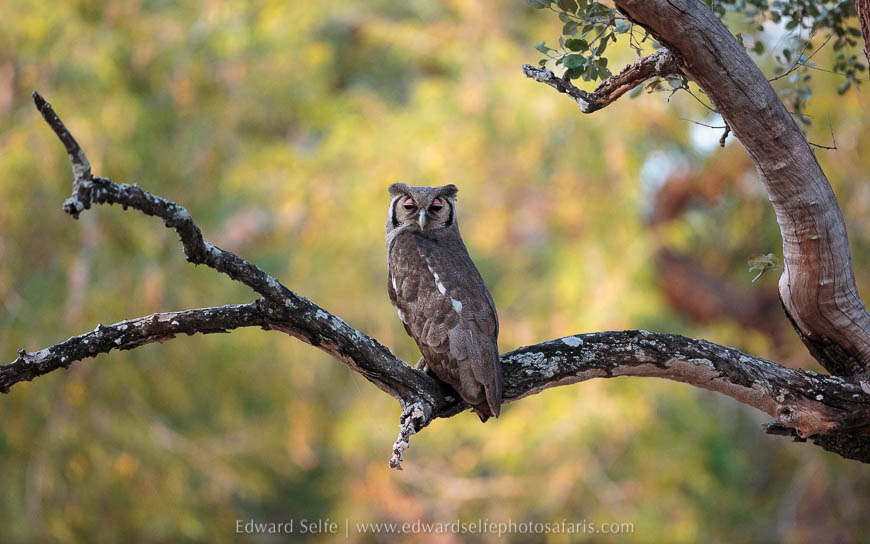

Heading out early in the morning, we tracked down a leopard briefly, before losing her in the bushes and then spent the best of the morning light with a waterbuck in beautiful grassland and elephants in the forest areas. This is one of my favourite techniques and great fun to perfect with guests! One elephant was quite agitated, and we followed his movements to a mating pair of lions nearby. The male was not very visible but the female gave us a lovely view.
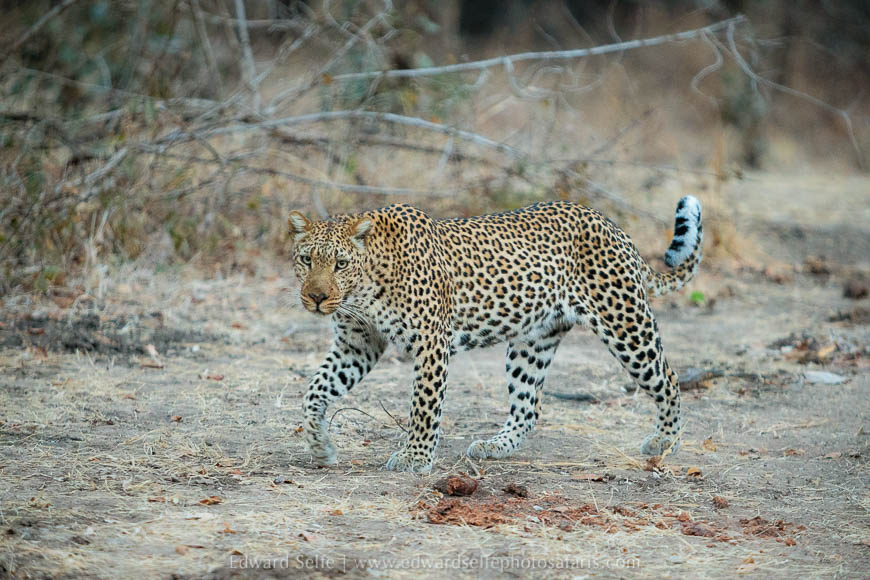
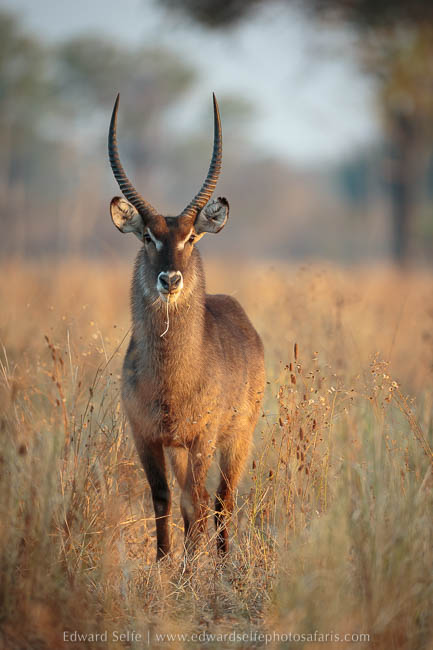
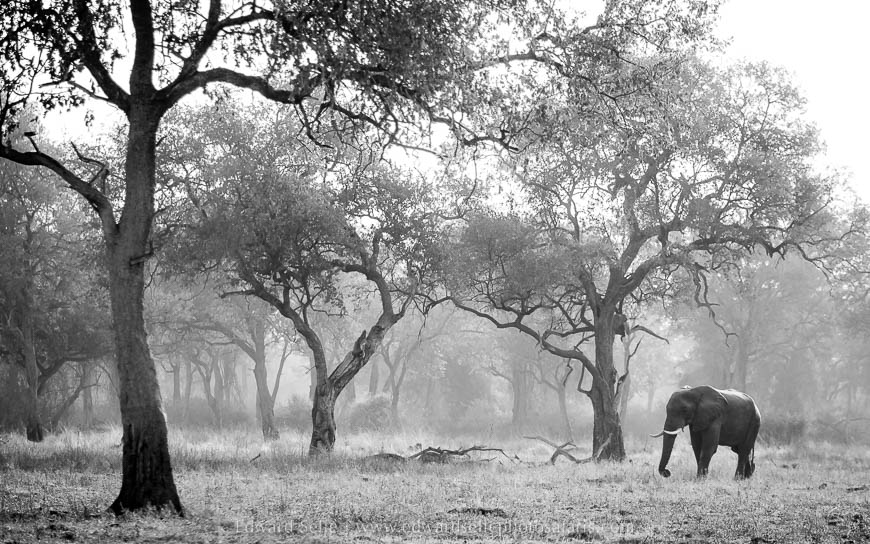
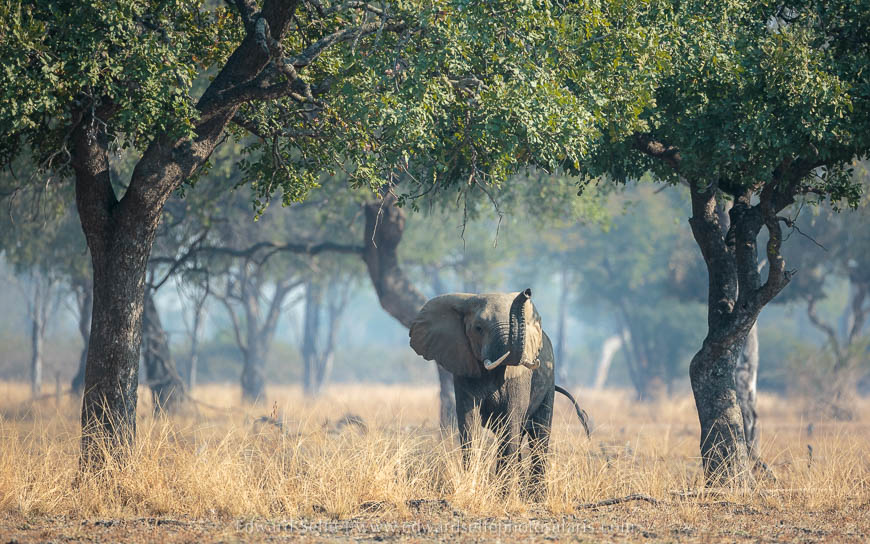
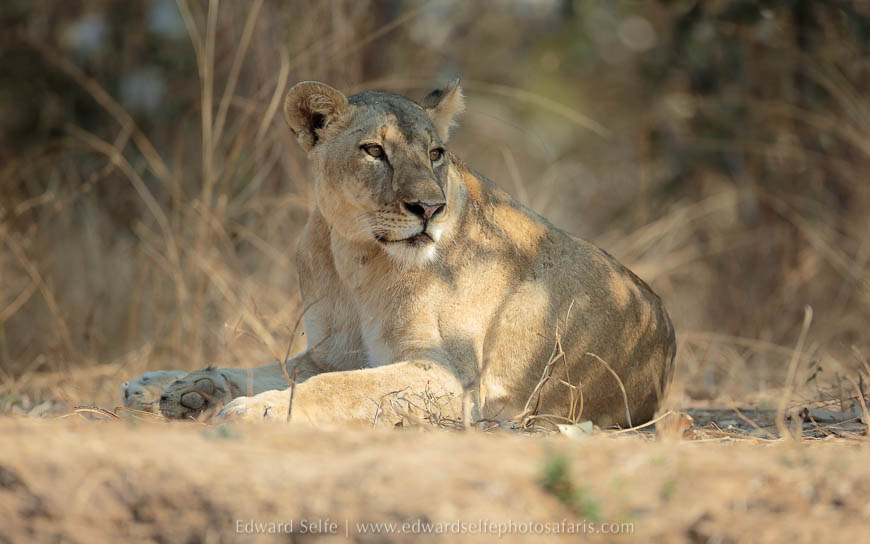
Our last day in Mfuwe was spent with zebras, playing creatively with depth of field, and working on side-lighting of lions at night. I was helping Wil and Marlies who had not done this before, but I managed to get one shot of Ginger before he lay flat again, stomach full of elephant….yes, they hadn’t moved far!
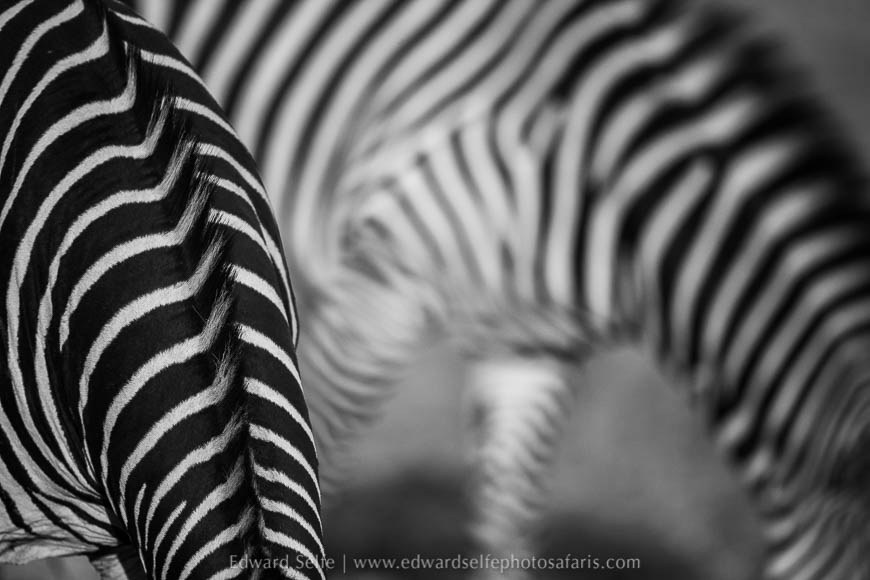

Our first day in the Nsefu Sector lead us to the local pride of 6 lions, 3 females and 3 young males. They were resting in nice light, but we were after something more dynamic so we left them for a while and hoped to find them being a little more active later in the afternoon. They weren’t but we had fun with hooded vultures as they dropped to the ground to feed on the lions’ leftovers.
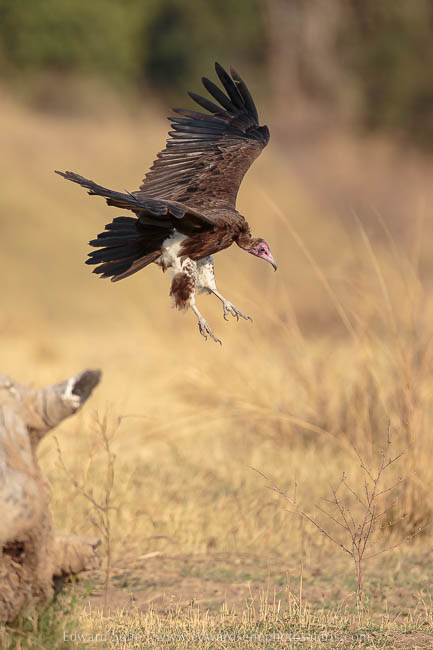
The next couple of drives were quieter, with “only” sightings of standard plains game, elephants and a superb collection of 21 giraffes at the water’s edge one morning. We spend a lot of time with predators when we find them because they are not a guarantee every day, though in reality, barely a day passes without a predator sighting of some kind in Luangwa.
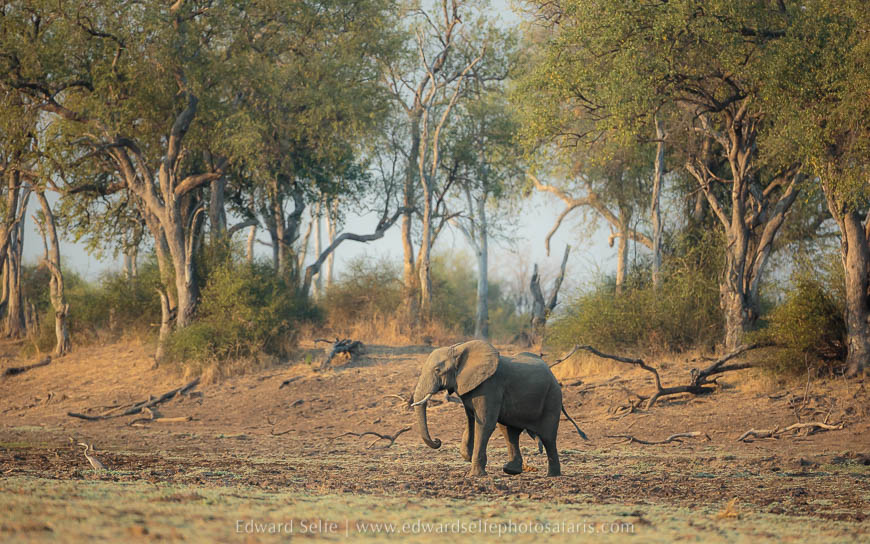

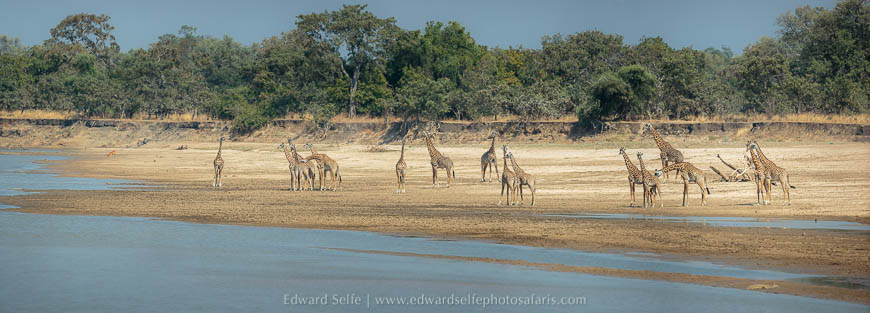
The 2nd morning, we decided to head north to look for Olimba, the famous leopard of Nsefu who centres her territory on the stunning stork colony area. She has a small cub – aged around 4 months – which is starting to share carcasses with her, so we hoped to find the two of them! After a bit of scouting around, we tracked her to a sausage tree where she was feeding on the remains of a bushbuck which she’d clearly killed the previous day. Her cub was not at the sighting but that was not too surprising since an old carcass, with associated smell, attracts too much attention from hyaenas which are a serious threat to a small cub.
We could see Olimba in the tree, but nearby we also spotted another leopard! I suspected that it would be her 18 month old cub from 2017, but once we got closer, we could see that this was an old leopardess with very worn teeth. She was clearly hoping to steal some of the carcass from Olimba. Soon after we arrived, Olimba came down from the tree, snarling and growling at the intruder chasing her away from the tree. She pursued her for about 500m out onto the open grassland behind the stork colony! They stood on opposite sides of a bush and snarled at each other. Both called repeatedly in their characteristic grunting way! It was one hell of a spectacle, one which we shared with Chimwera, Olimba’s 18 month old cub who was watching from nearby…..3 leopards in one location!!

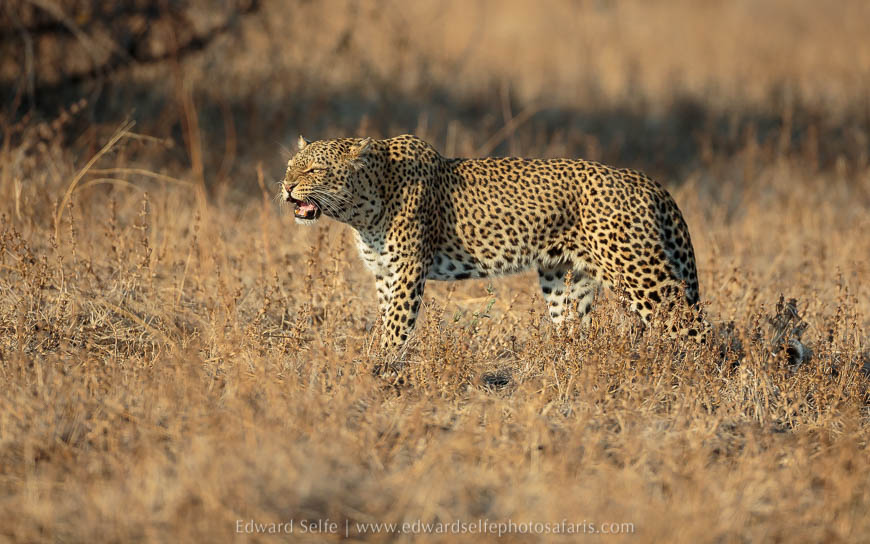
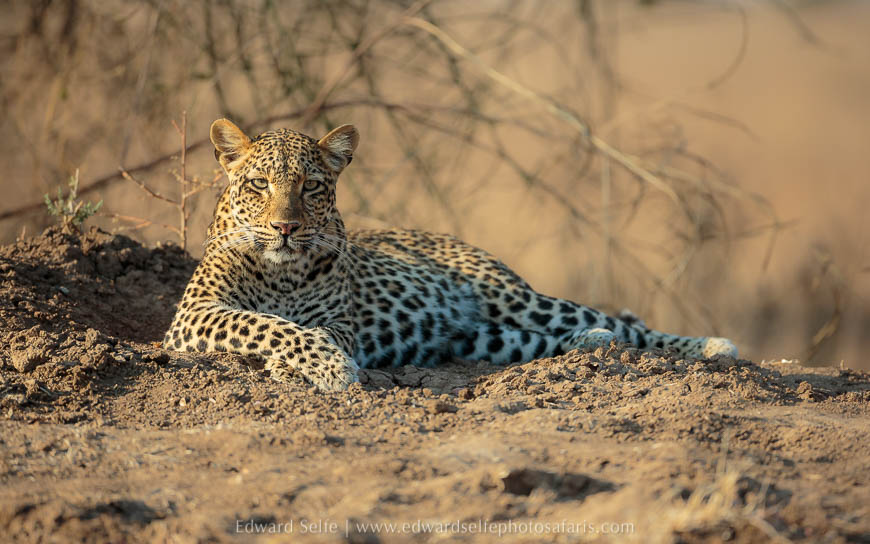
Olimba is clearly dominant and the intruder shadowed her on the other side of the bush. Eventually, Olimba wandered off towards the Croc River. We watched her drink and then return to her carcass in the nearby sausage tree.
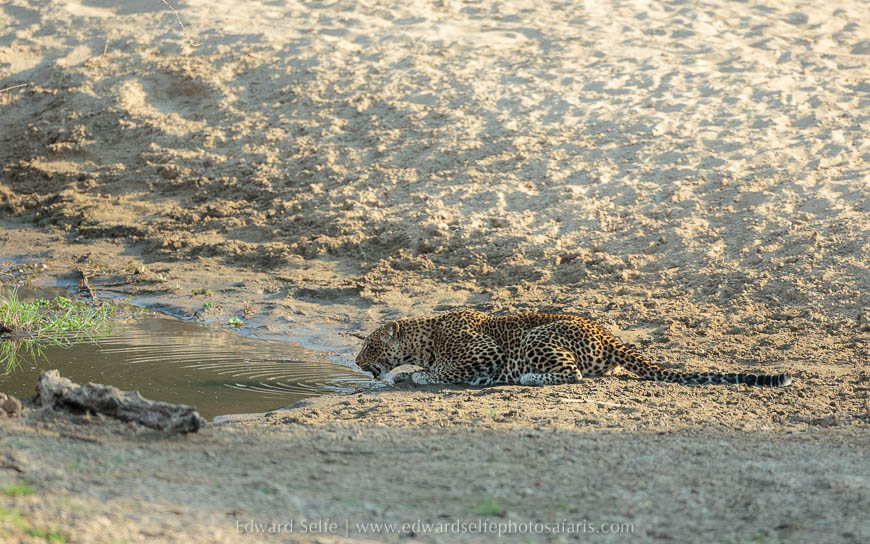
However, when she got back to the carcass, she found the intruder was already feeding, having taken a short cut while Olimba got a drink. The intruder was now dominant with her position in the tree, and she fed hungrily, snarling at Olimba in between mouthfuls. Olimba collected scraps below. Eventually, the intruder descended and wandered off. Once again, there was lots of grunting, calling and territorial marking from both females.
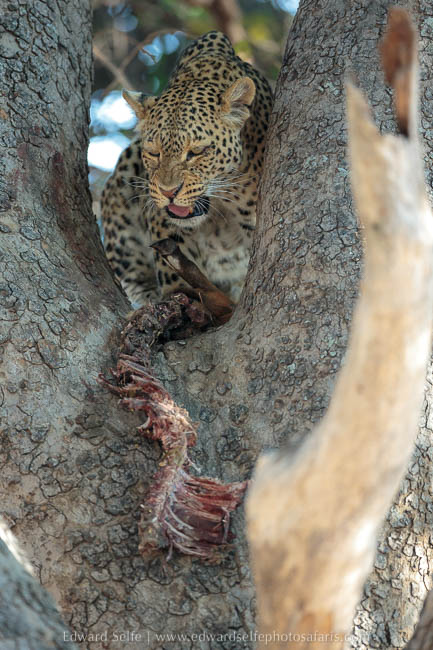
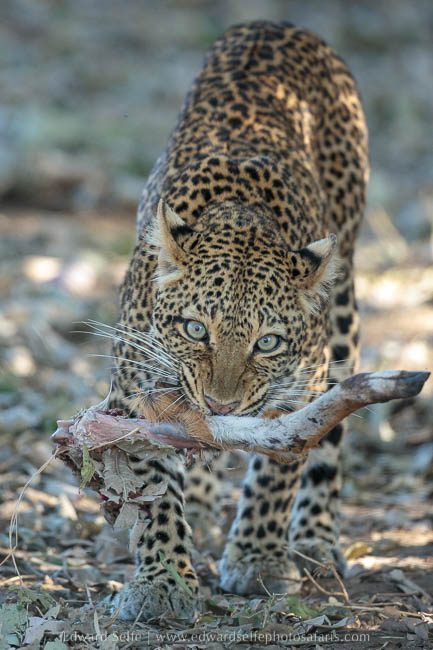

Olimba claimed the rest of the carcass and we suddenly heard calls from the cub nearby. Very carefully we tracked them to a nearby mahogany tree where Wil got one good shot of the youngster – shown below! I was very careful not to get too close or stay too long, but in fact, Olimba called the cub at this stage and it joined her on the carcass.
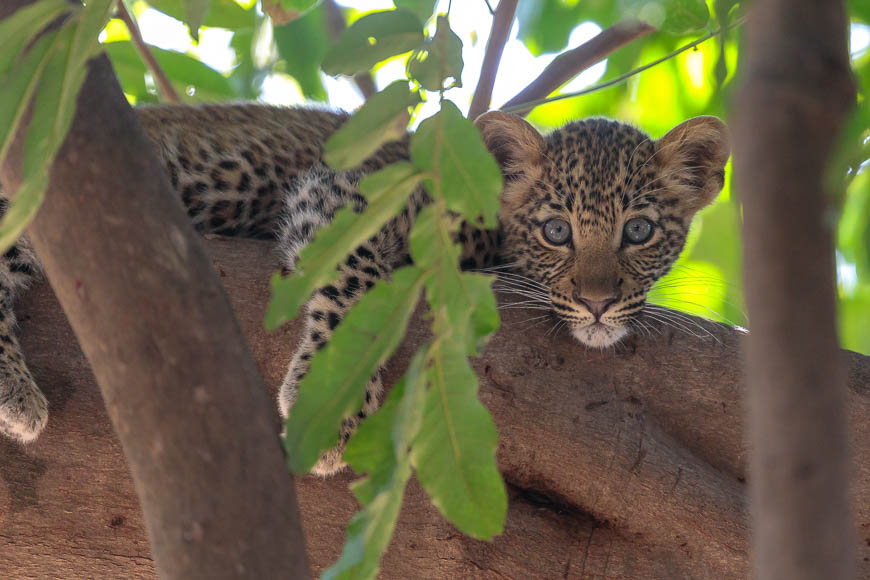
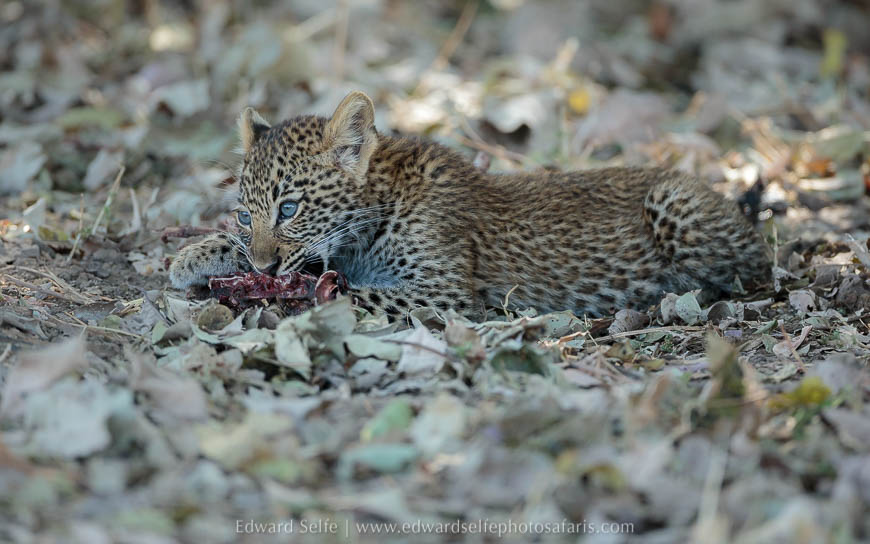
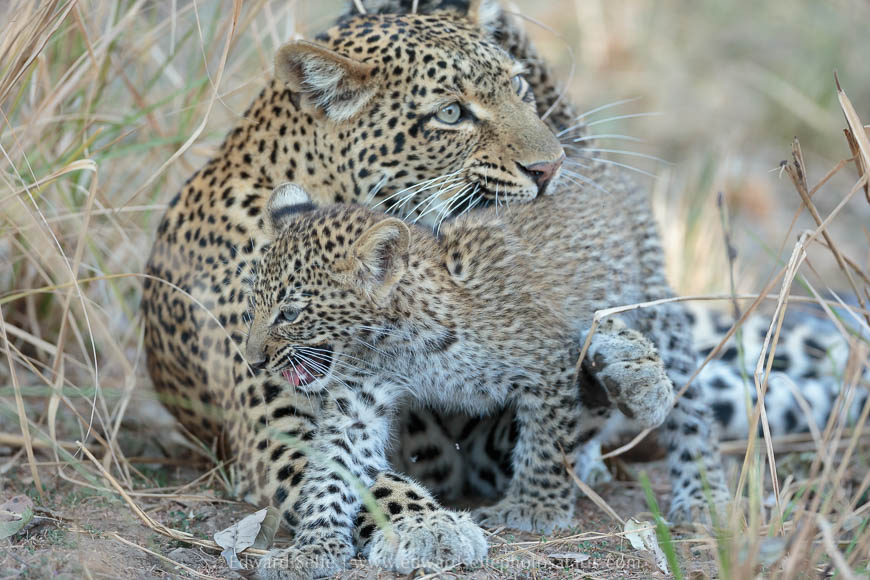
We had seen 4 leopards on one carcass – so much for leopards being solitary and antisocial cats! – and we left the area exhilarated by the encounter. Added to this, we had spent our 3 hour sighting with these leopards entirely alone, with one brief visit from another vehicle. The freedom that this gives is incredibly important for photographers, and is becoming increasingly hard to achieve on safari. The more remote areas of Luangwa – compared to the shared central area – are the hotspots for wildlife photographers to target.
We weren’t sure how to follow such a sighting, so we decided to target the scenic areas of the Nsefu Sector in the afternoon and practice certain techniques. We enjoyed baboons jumping over flooded channels and elephants congregating in the grassland just before dark.

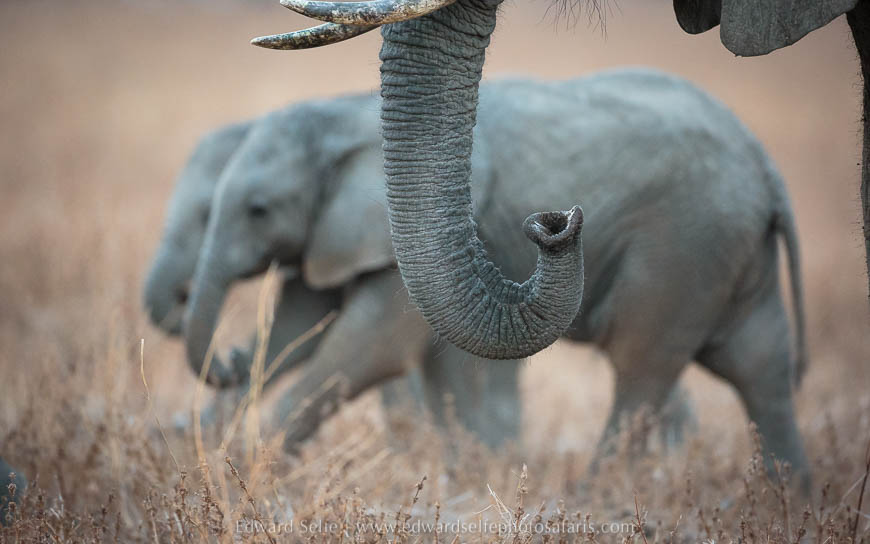
We took an all-day safari the following day to see more areas of the Nsefu Sector and enjoy some time at the river bank with lunch in the middle of the day. The previous evening, I had seen a large number of antelope running in the distance, so I knew that wild dogs were around so we decided to try and find them first thing in the morning. We were distracted by playful pukus stirring up the dust, but we eventually found the wild dogs. They had made a kill, but the hyaenas had overpowered them and the dogs were just moving off, leaving the hyaenas with the remains. Sadly we were not able track the dogs through the thick bush and we lost them soon after. Such is life on safari.
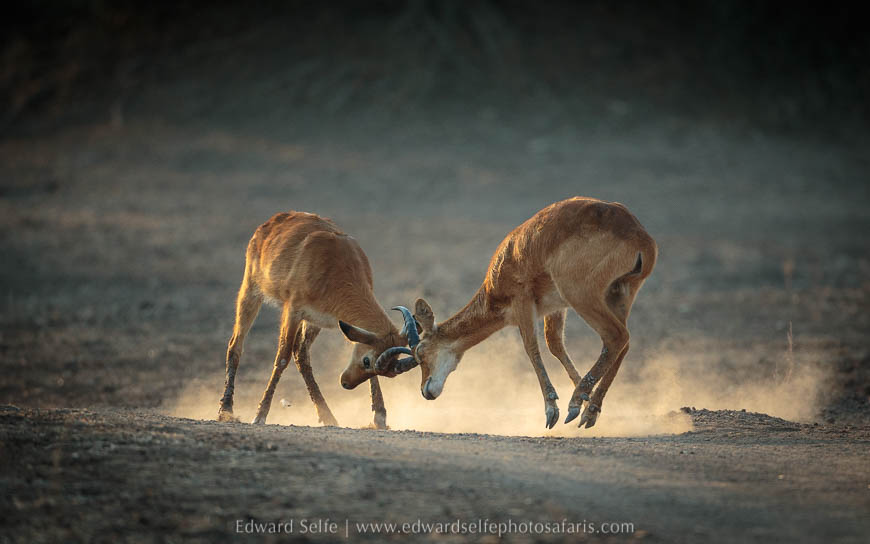

Lunchtime was spent at a stunning elephant crossing point; we stopped, checked around and started to unpack. After a few moments, a large male lion got up from a hidden place 150m away and stared at us for a few seconds before wandering off! A great start to lunch! Once we were sure he had moved off, we settled down to eat and watch the elephants in the river.

Soon after lunch, we found the male lion who was – not surprisingly – sleeping off his busy night of territorial marking and calling. We moved on, and I spotted some puku behaving strangely. Once they started to squeak their alarm call, I knew we were on to something nearby. A little scouting around, and we found Olimba on the move again…at 2.45 in the afternoon! Initially I thought she was moving from a carcass to her cub, or vice versa, but it became apparent from her behaviour (lots of rolling in dung and her playful mood) that she was going hunting. I know that she loves to hunt in the gully running through the stork colony, so we intercepted her on the open area at the top of that area.
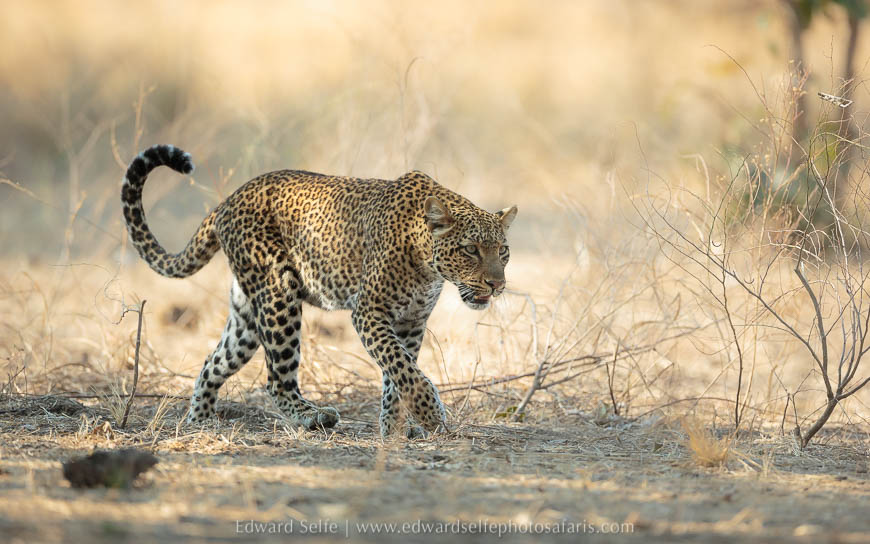
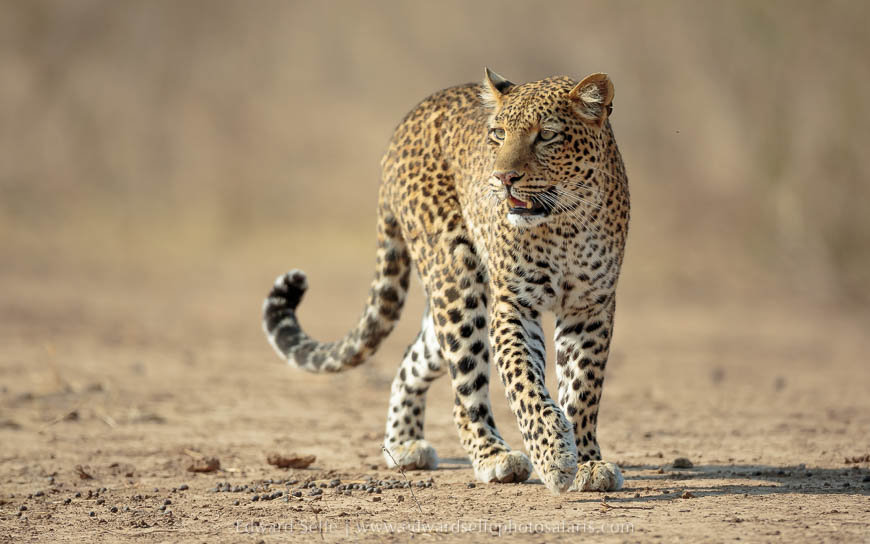
True to form, she descended into the gully and began to hunt along the bottom. Her skill is mesmerising to watch; she is aware of baboons and monkeys that might sound the alarm, and she sat and waited for a herd of zebras (too large to be prey for her) to move off so that they wouldn’t give her away. Eventually, she poked her head above the gully rim, spotted some impalas in the distance, and used the gully to approach them.
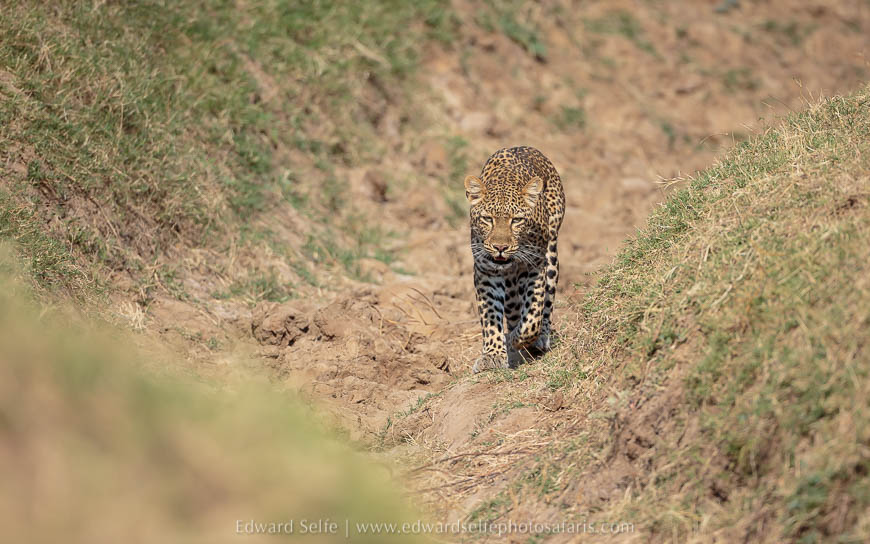

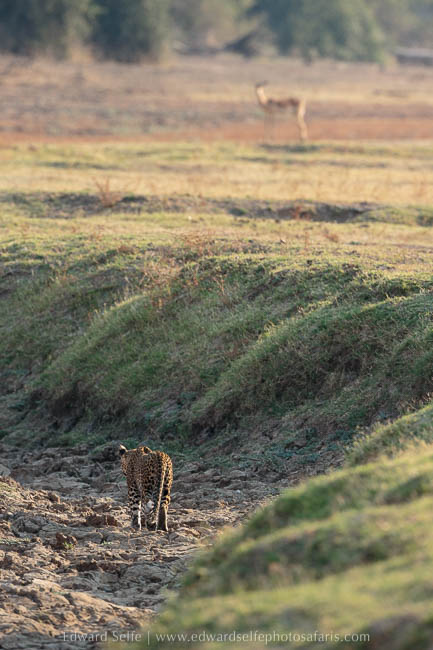
We cautiously tracked her progress, wanting to observe her hunting and not wreck her chances, but equally to make sure that we observed the moment of her ambush if it was going to happen! We lost sight of her, so drove right around behind the antelopes (who had no idea what was approaching them!) and waited.
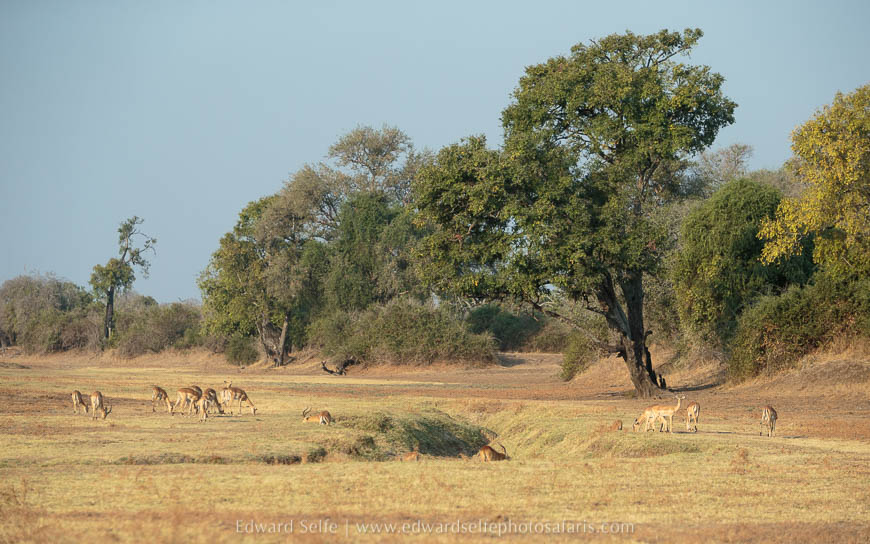
As always when I have watched leopards hunting, her attack came when we least expected it and from somewhere that we didn’t think she was! She exploded from the gully, aiming for an impala on the right side of the gully. It jinked back into the gully, crossing it with Olimba in pursuit. Within a few strides, the impala was clear of the leopard’s reach, and Olimba retreated back into the gully, hoping to avoid further detection. Dejected, she moved out of the area to allow the situation to calm down. The antelope were snorting and barking indignantly long after she had approached us down the gully and moved to a different area.

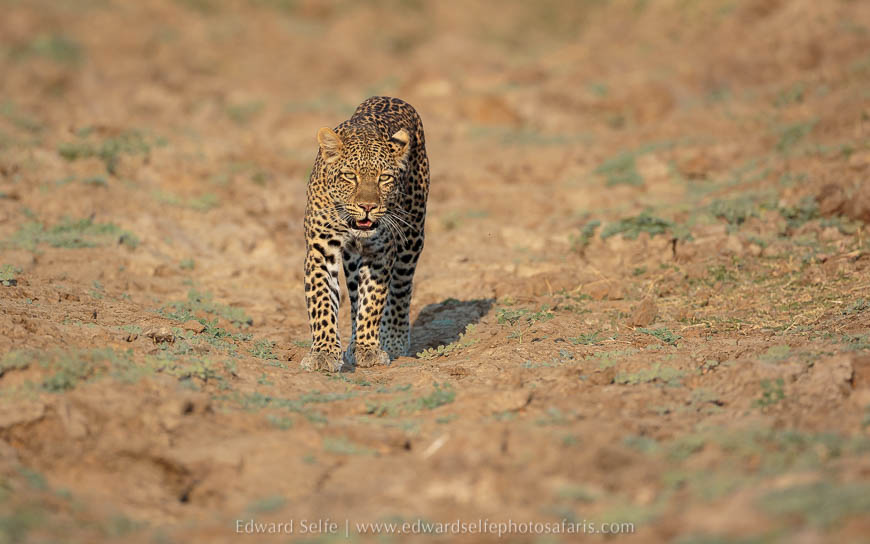
She took time to rest and catch her breath, surveying the scene across the stork colony. Then, to our amazement, she returned to the gully, retraced her steps and approached the same antelope from the opposite side. I guess she is relying on impala having short memories! We watched cautiously until dark when we left her to hunt without being observed.
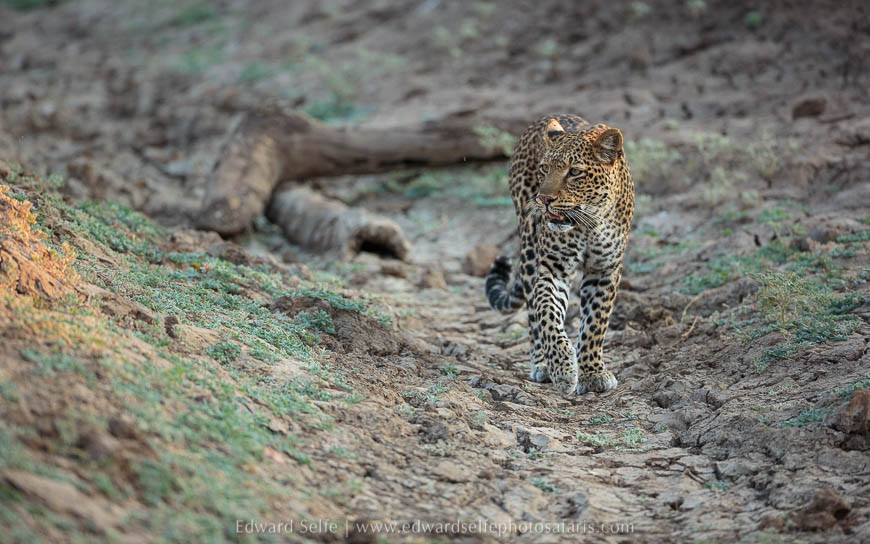
Returning to camp, we found a tiny one-day-old giraffe with its mother out in the open plains where she hopes to avoid detection by predators! Good luck little giraffe.
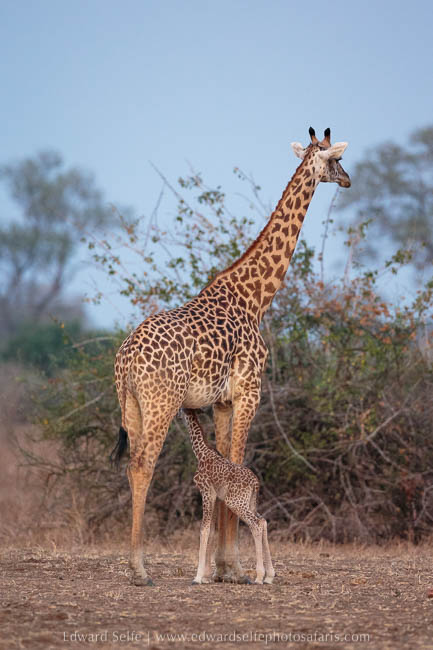
After so much excitement that afternoon, we retuned to camp and decided to explore the beautiful Nsefu salt pans the following morning. On the way there, I found a series of lion tracks in the sand on the road, but they were heading in the opposite direction from us so I knew that the rest of the Nsefu pride were not going to be found at the salt pans that day! But we did find a large number of zebras, one of which ran to catch the herd, giving us some stylish jumps on the way.
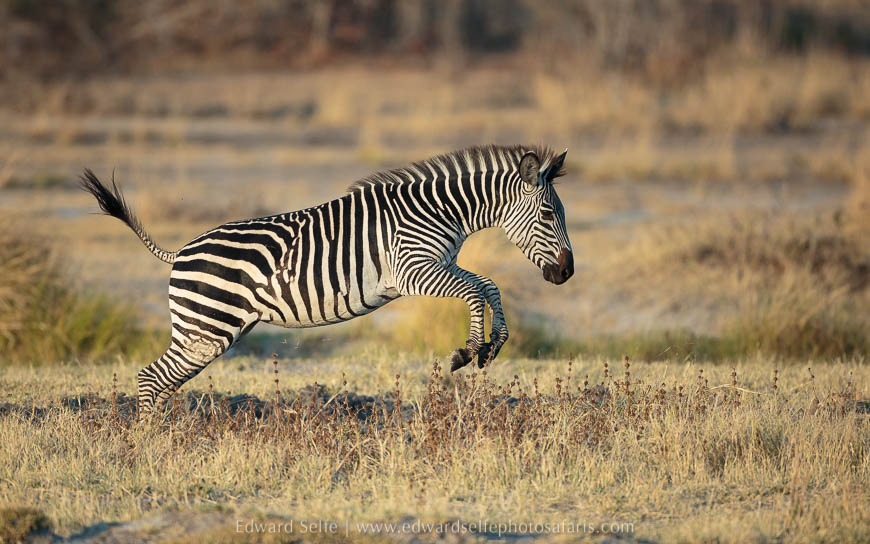

3 juvenile saddle-billed storks were looking bored and unemployed near the head of the spring. We wondered whether they were all offspring of the same adult pair, since 3 chicks is a large number for these storks to rear successfully. A few moments later, the question was answered when the adults returned. After some whining, beak-clacking and begging behaviour, the male regurgitated a series of 6 or 7 fish for the youngsters who quickly consumed them. It was wonderful to watch the youngsters performing a variety of submissive postures and then being rewarded with food. They also conveniently chose to do this in a situation where we could take great photos!
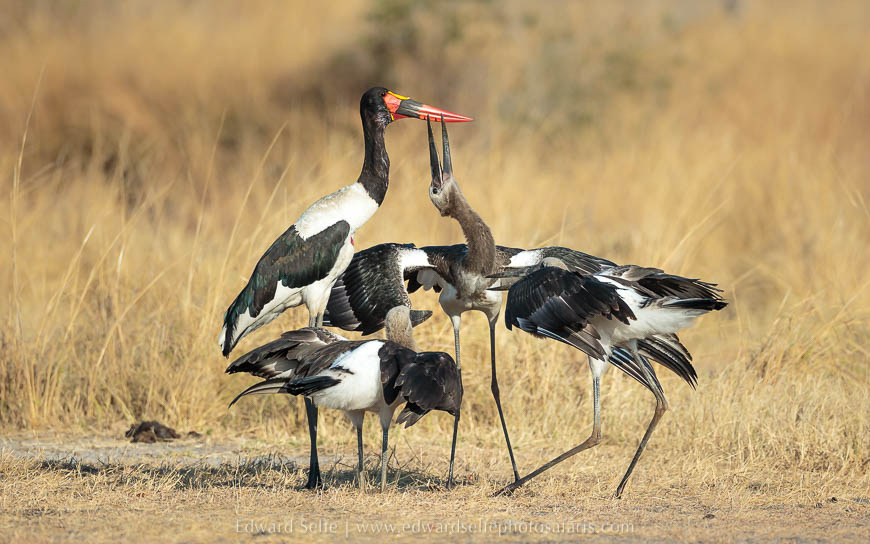

There were very few crowned cranes at the salt pan this time round, which was unusual. Cranes are under threat globally, so it will be important to monitor the Luangwa’s population since it represents a large slice of Zambia’s population of these special birds.
We set out with no plan in the afternoon, with the intention of moving slowly, reading the bush and seeing what it gave us. Via vultures in the trees, we tracked down the lions who had killed a young elephant of around 4 years of age. Elephants are not an easy target and we wondered why they were choosing this over easier options. We concluded that this pride of 6 lions (with 3 large, powerful young males) would usually kill buffalo and zebra, preferring large prey that yield lots of food. Most of Nsefu’s zebras are at the salt pans and the buffalo herds are making use of the excess water this year and remaining in the grasslands, so elephants are the most appropriate target for lions along the river. The lions were quite nervous and a little aggressive – which was unusual – so we didn’t approach too close on this occasion.
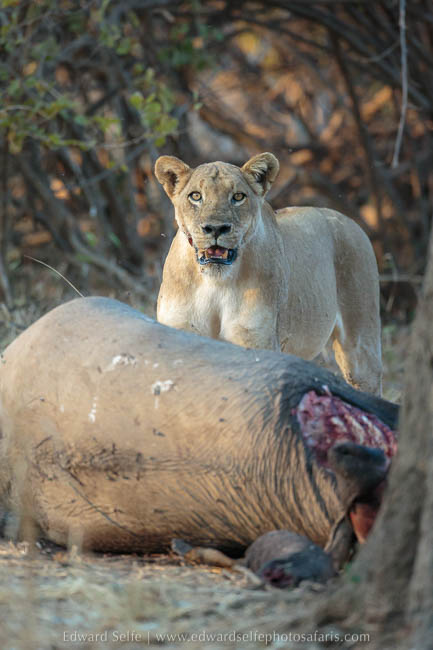
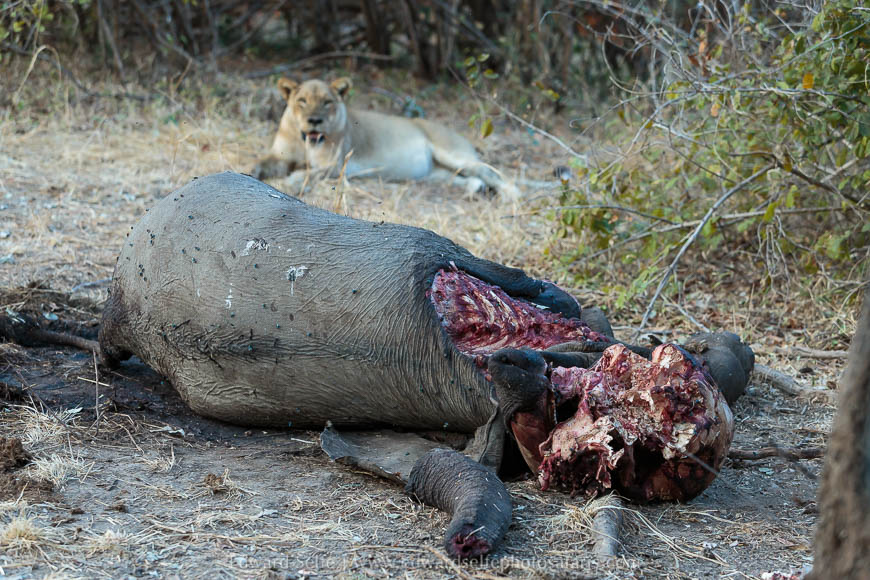
The late evening light was pink and beautiful so we spent time with baboons in the ebony grove.

Early the following morning, I picked up very fresh tracks of a leopard. We followed, and when the tracks looked just moments old, I stopped to listen. Immediately, we heard very loud impala snorts nearby, so we drove over to find a leopard with an impala kill. She had just killed it, seconds before, and was dragging it away into the bushes. It took her no time at all to disappear into the thickets and we were not able to see her again. Amazing and frustrating; what a way to start a morning!
We left that situation so the leopard could feed in peace, and moved to a popular elephant river crossing. No elephants this time, but we had fun with a family of giraffes with 4 youngsters who were playing and running around. Returning to camp, we found a giraffe crossing the river in what is one of my favourite Luangwa spectacles.
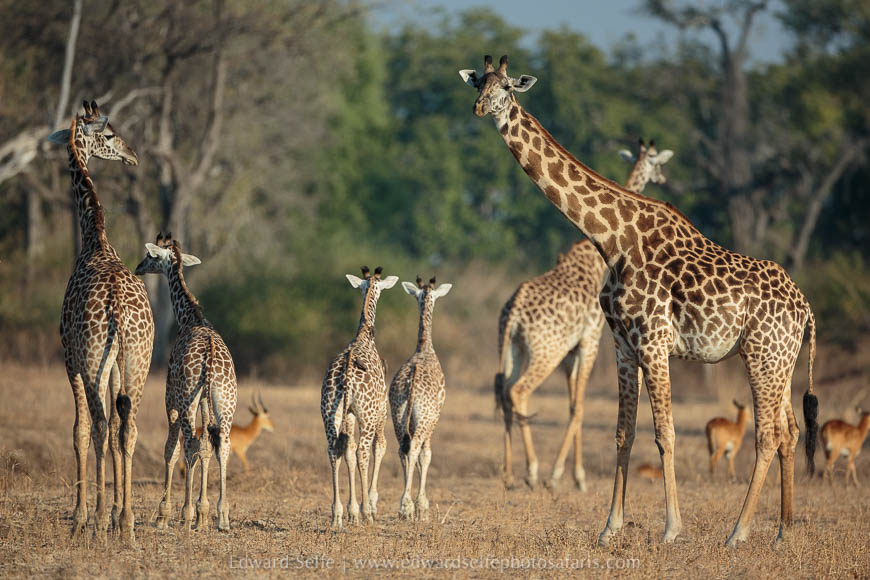
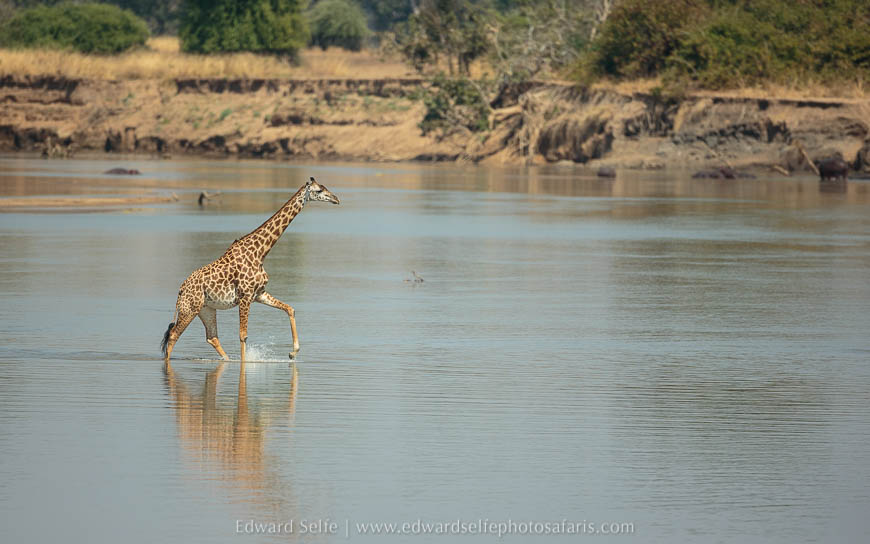
Our final afternoon drive at Zikomo was quiet until I heard the sound of a pearl-spotted owlet calling nearby. We quickly found it and spent some time trying to get a clear shot. It repeatedly returned to a hole in the tree and we then saw a second owlet nearby. After removing some rotting wood from the hole, it flew to the other owl and they mated for a few seconds! This was very interesting to watch and totally unexpected!


We headed north on our final morning in the Nsefu sector where we spent a long time with two beautiful herds of elephants in the morning light, and then visited a hyaena den where we were lucky to get repeated views of a youngster who is still covered in black hair and is around two months old. Once again, the Nsefu Sector proves itself as the Luangwa’s prime wildlife destination!

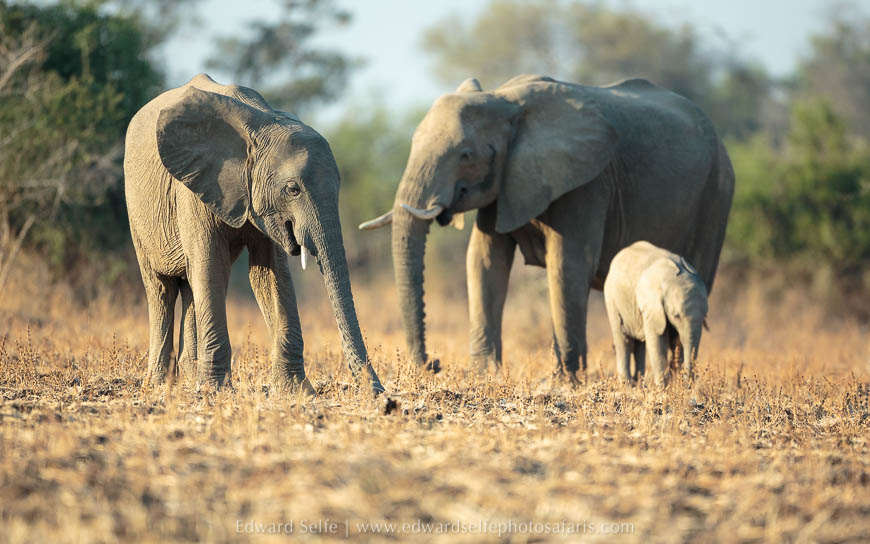
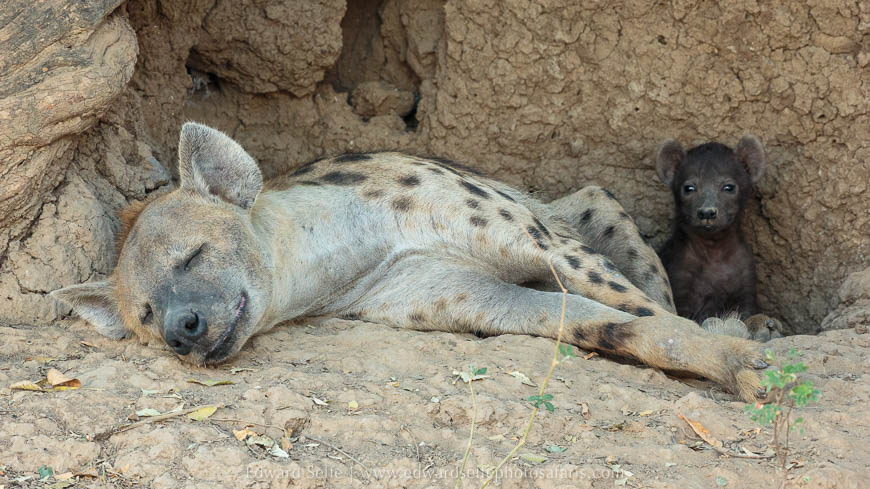
We returned to the Mfuwe area and spent our last couple of days looking for interesting light and beautiful encounters. We took an all day safari to the northern sector of the South Luangwa, a day trip that gave us some wonderful sightings. Here is a summary of the highlights from our last couple of days.
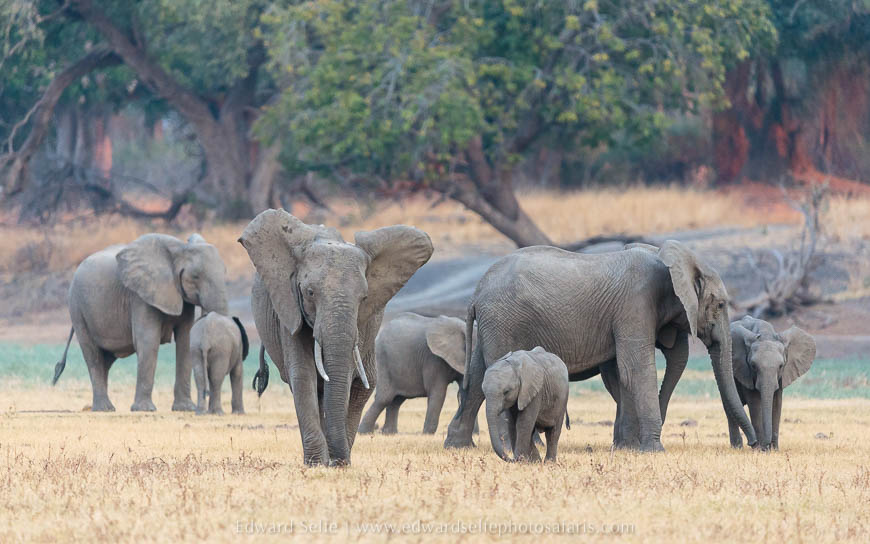
Late one afternoon, we found a large herd of elephants which approached our vehicle and spread all around us. After taking some shots, we simply enjoyed the view.
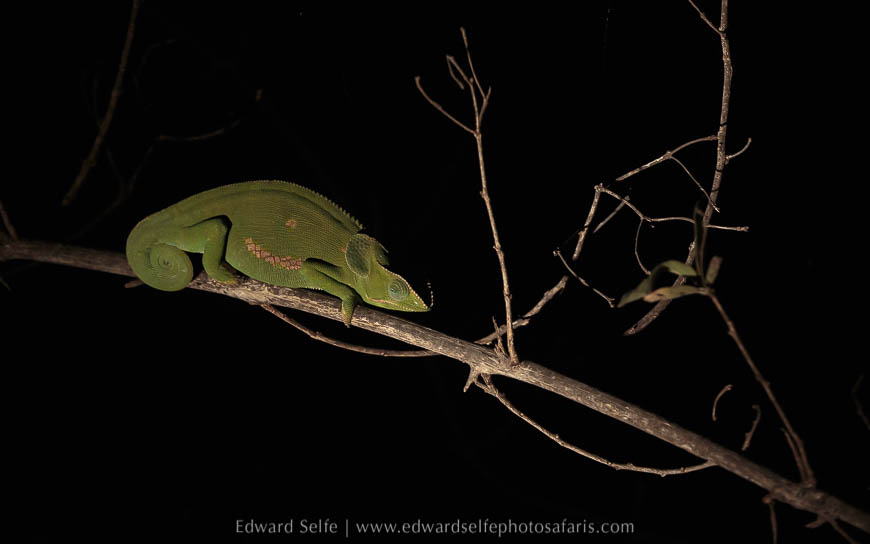
Returning to camp one night, our sharp-eyed spotter found this chameleon on a nearby bush.
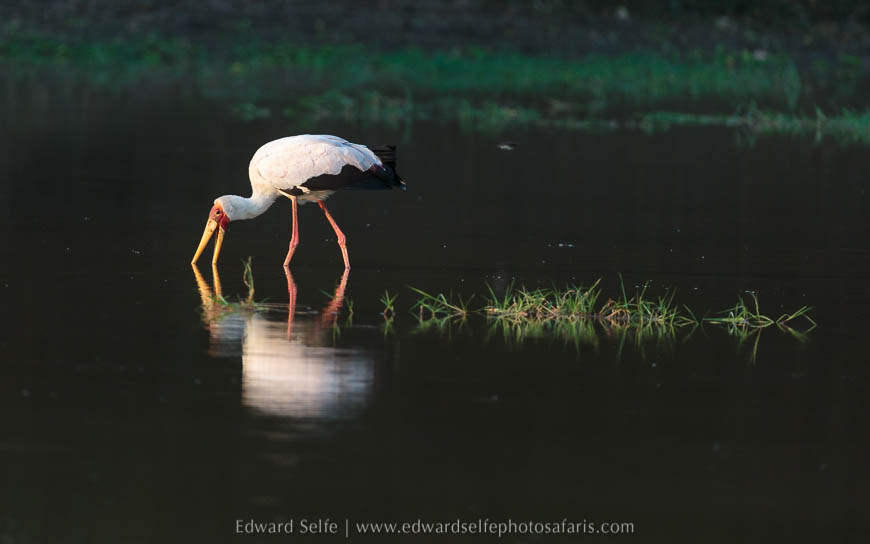
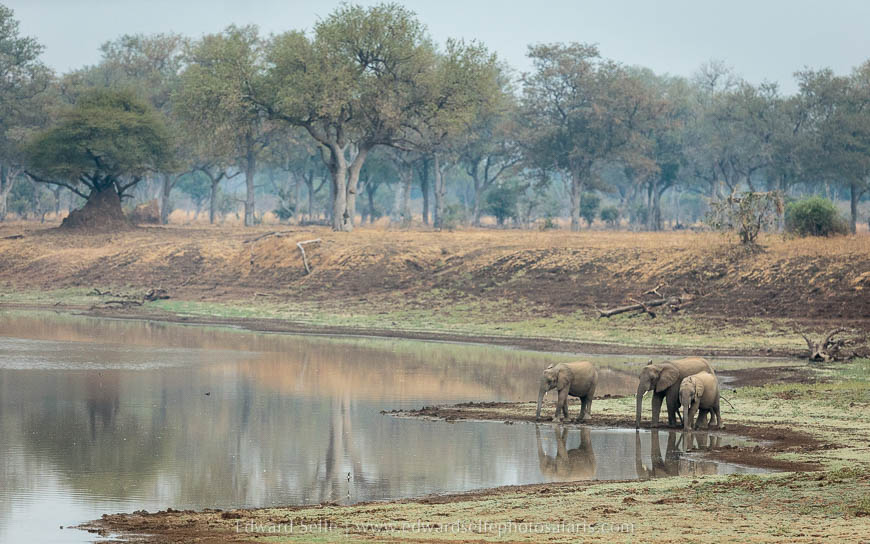

On our all-day safari, we tracked down the Luwi Pride resting on the banks of the Luangwa. I believe one of the females is coming into oestrus because the male was repeatedly scenting her, and giving his flehmen grimace.
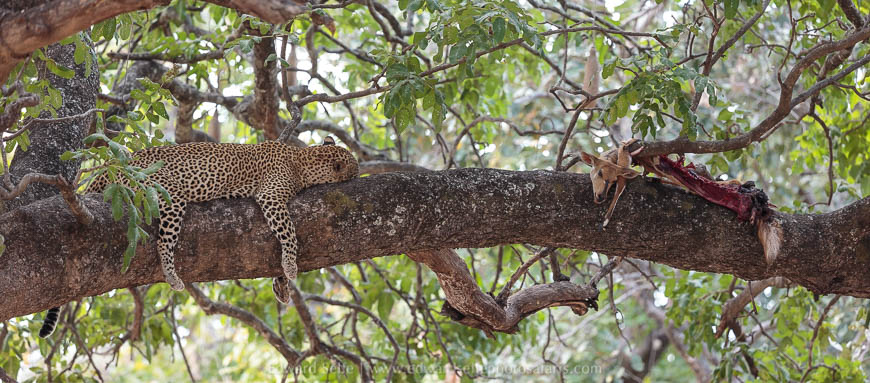
The highlight of our all-day safari was spending several hours with this male leopard and a bushbuck kill. He was not very confident with us watching him, so tended to bury his head in his paws, but we enjoyed the view and the luxury of being able to spend several hours in the presence of one of Luangwa’s most powerful predators.
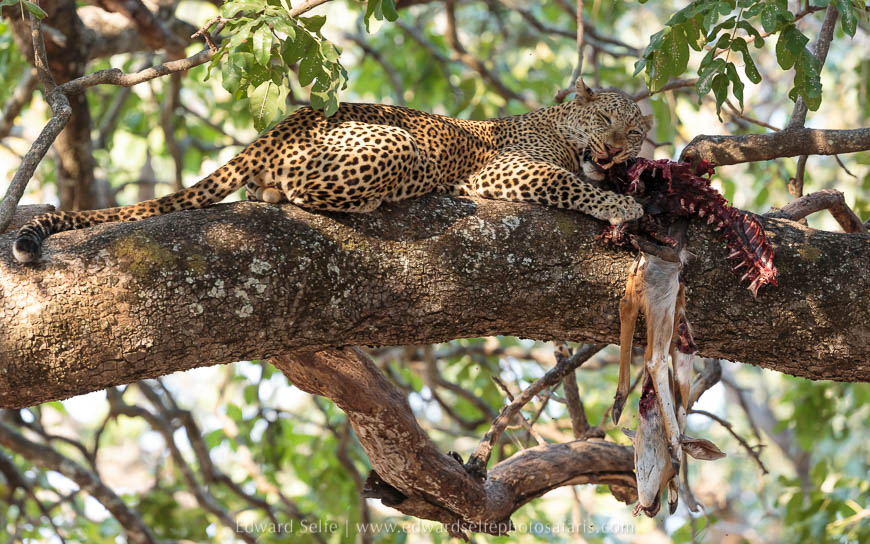
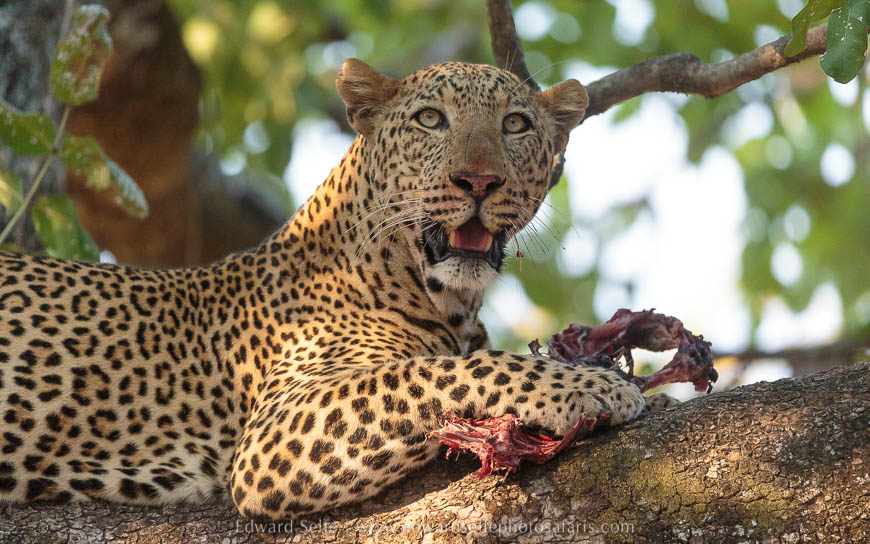
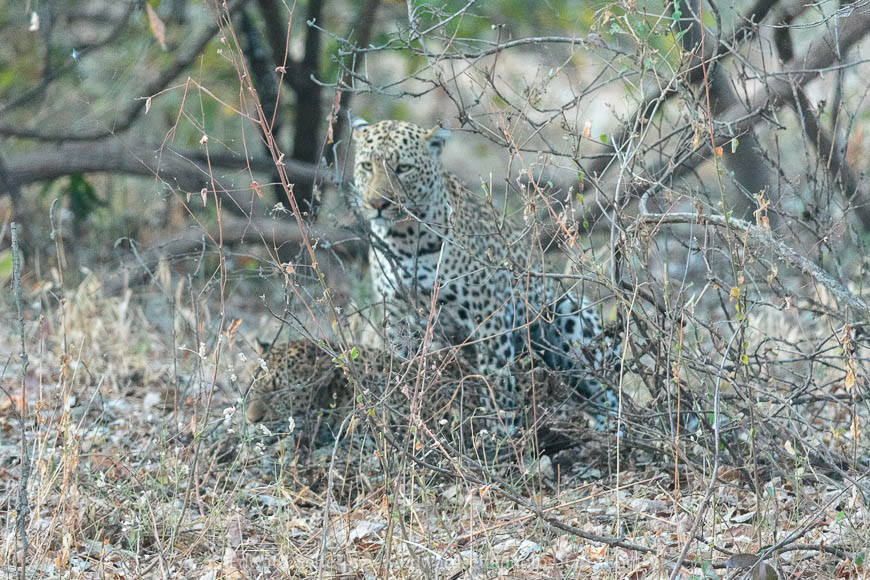
On our last morning, we followed the call of a leopard that we heard from the camp. Getting close to the area of the call, we stopped to listen. We quickly heard the explosive, coughing-grunting sound of leopards mating! I was pretty excited that we would end this safari with such an event. We moved carefully, knowing that males are shy and tend to avoid people, but whatever way we approached, they kept one step ahead of us and eventually disappeared into a thicket where there are no roads. We could hear them mating, and were quite frustrated that we couldn’t approach, but that is the way it is with Nature sometimes! This poor quality photo is all I have to show for an amazing sighting and encounter….but we loved it all the same!
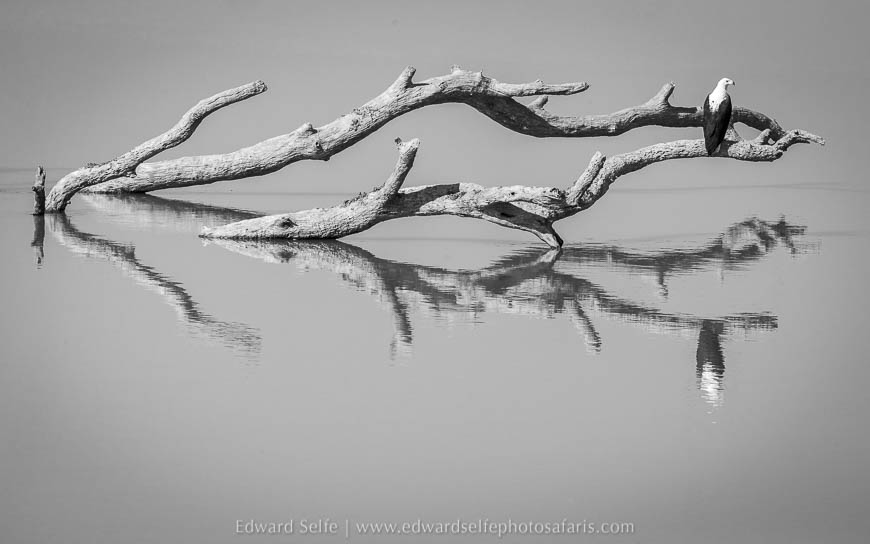
After tea break, we headed back to camp for the final time, stopping to enjoy the stunning reflection made by this fish eagle on his fallen tree.
As always, it was a pleasure to take enthusiastic wildlife photographers on safari. Wil & Marlies loved the great sightings that we had, and laughed off the days when things didn’t go our way (I’m remembering the mating leopards from the final morning!). This “what will be, will be” approach to wildlife photography always ensures they get great sightings and enjoy the bush even when there is nothing to see! We are already talking about 2019’s trip!


